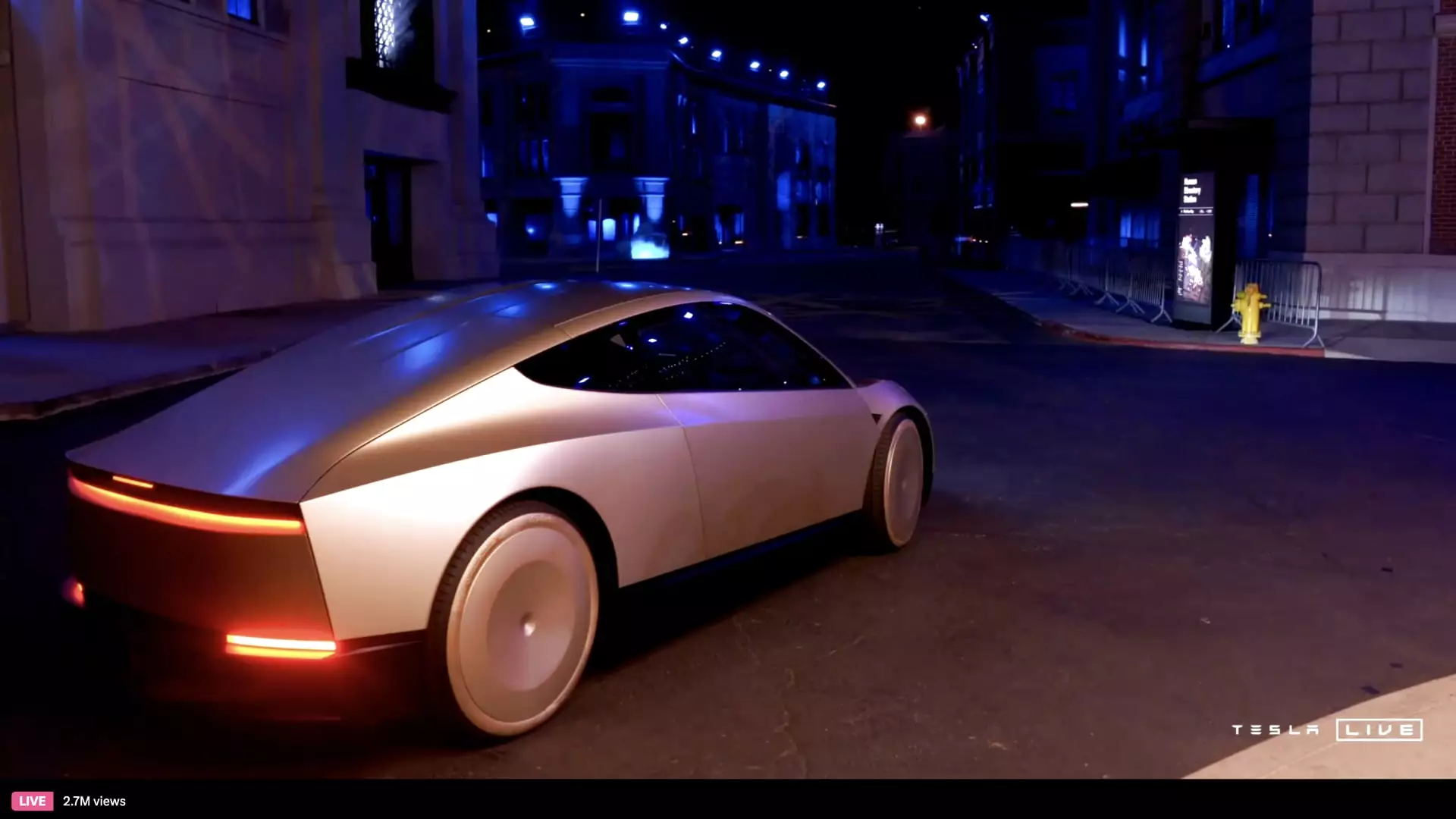Tesla, the electric vehicle (EV) giant led by the visionary CEO Elon Musk, recently hosted a much-anticipated event focused on its new robotaxi initiative. However, despite high expectations, the unveiling of the Cybercab self-driving concept did not resonate well with investors. Following the presentation, shares of Tesla plummeted by 5.8% in premarket trading, illustrating a clear sentiment: the event did not meet the lofty aspirations set by Musk and Tesla’s storied vision for the future of autonomous driving.
The concept of the Cybercab—a sleek, two-seater vehicle devoid of traditional controls like a steering wheel or pedals—sounded promising in theory. Musk’s affirmation that the vehicle could operate autonomously ignited hopes for a transformative product poised to redefine transportation. However, instead of the anticipated roadmap, Musk provided little clarity on the production details or timelines. The announcement of a sub-$30,000 price point for the Cybercab was notable, but lacking in specifics regarding manufacturing left investors skeptical.
In the aftermath of the event, financial analysts shared their critical assessments, many highlighting a major shortfall in the presentation. Barclays’ team emphasized that Musk’s unveiling primarily showcased the overarching vision for the company’s future in the realms of artificial intelligence (AI) and autonomous vehicles (AV), rather than offering concrete, near-term opportunities for investors to latch onto. This lack of practical insight left analysts feeling that the event missed critical momentum that could have been used to bolster investor confidence.
Moreover, there was no significant update on Tesla’s Full Self-Driving (FSD) technology, which remains a cornerstone of the company’s expansion into autonomous driving. The FSD system—currently functional under supervised conditions—requires human intervention, which critics note undermines its claim of being “fully autonomous.” Analysts derived from Morgan Stanley expressed that the failure to demonstrate tangible advancements or detailed metrics surrounding FSD performance resulted in a missed opportunity for Tesla to assert itself as a leader in AI integration.
The road to establishing self-driving cars as an everyday reality remains lengthy and fraught with challenges, particularly regulatory hurdles. Concerns surrounding safety, ethical implications, and regulatory approval have made the path to widespread adoption convoluted. The cautionary positions adopted by regulators contrast sharply with the aggressive timelines often projected by Musk. For example, while he suggested FSD might hit California and Texas by next year, many remain skeptical that such ambitious deadlines can be met in the current climate.
In this complex landscape, it’s worth comparing Tesla’s situation with other companies in the sector. For instance, Waymo, a frontrunner in the autonomous vehicle domain, has successfully launched its robotaxi service to the public. Their steady progress underscores the competitive nature of the market, raising questions about whether Tesla can maintain its pioneering status given the apparent stagnation reflected in the recent event.
Investors are increasingly weighing their options as the excitement that typically accompanies Tesla events appears to be waning. The analysts at Piper Sandler warned that many trading-oriented firms may be left unimpressed, suggesting a potential sell-off in the coming weeks as the pre-event momentum fades. This reality check presents a pivotal moment for Tesla, as it may require recalibrating investor expectations in light of recent developments.
Furthermore, the absence of in-depth dialogue regarding partnerships—particularly a potential collaboration between Tesla and Musk’s AI initiative—left an air of uncertainty. Without transparent discussions about strategic alliances, investor confidence could continue to dwindle, challenging Tesla to prove its mettle as more than just an automotive company but as a serious contender in the burgeoning AI sector.
As the dust settles on Tesla’s robotaxi presentation, it becomes apparent that the company’s vision for the future is still a work in progress. While Musk remains an inevitable figure driving ambitious ideas, concrete actions and results are what investors seek. In the competitive landscape where autonomous driving is becoming an essential arena, Tesla must navigate its challenges with clarity and precision if it hopes to regain the confidence of its stakeholders and position itself as a continued leader in technological advancement.

